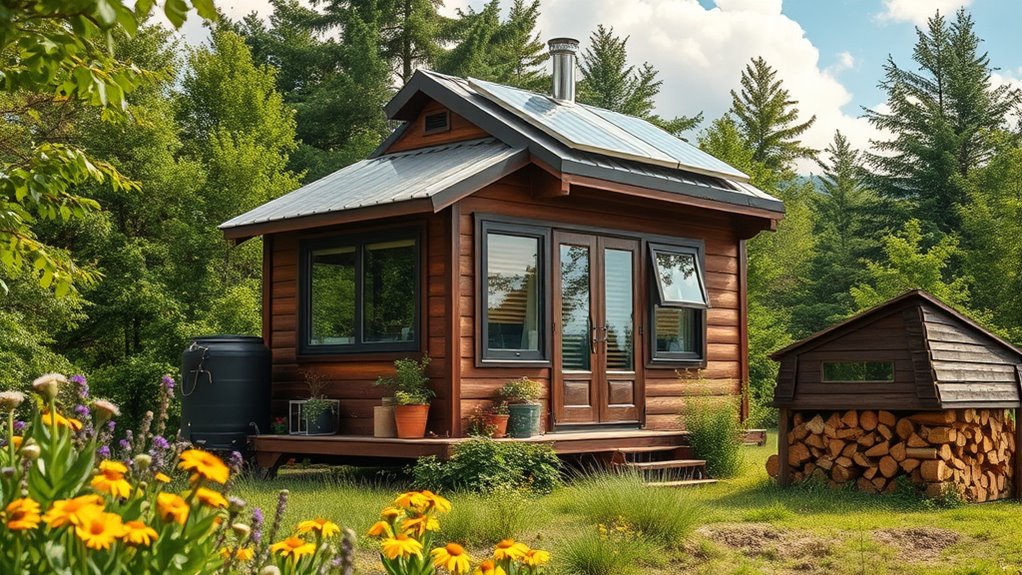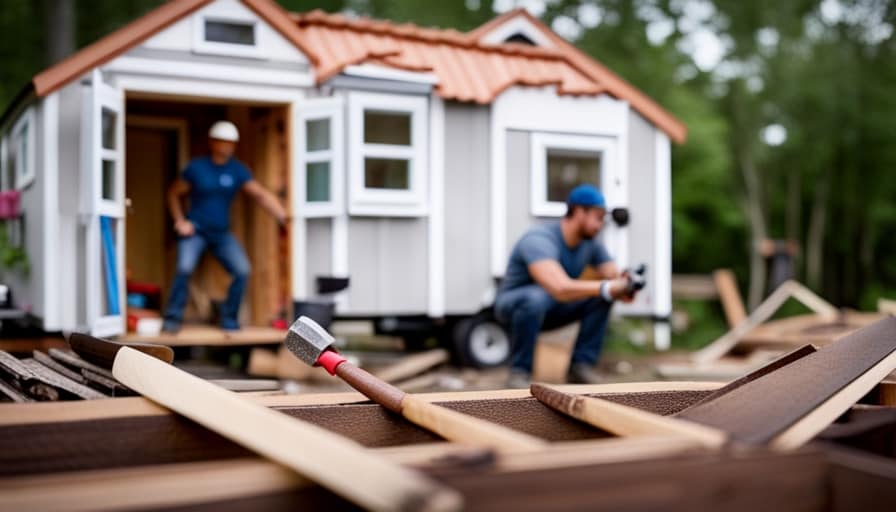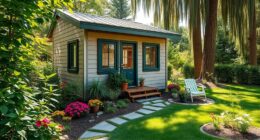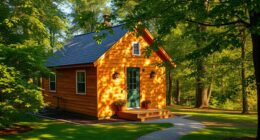Have you ever wondered if living completely off-grid is truly within your reach? Designing a tiny house that’s self-sufficient requires careful planning and understanding of key systems. From energy to water, each element plays a crucial role in creating a sustainable, low-maintenance home. To guarantee your off-grid lifestyle is both practical and reliable, it’s essential to follow a thorough checklist tailored for beginners—so let’s explore what that entails.
Key Takeaways
- Assess your energy needs and select appropriate solar panel, inverter, and battery storage systems.
- Identify and test your water source, then implement a rain catchment or well system with filtration.
- Choose durable, weather-resistant solar panels and high-quality inverters for efficient energy conversion.
- Install a multi-stage water filtration system with regular maintenance to ensure safe drinking water.
- Conduct routine system inspections, maintenance, and monitoring for both energy and water systems to ensure longevity.
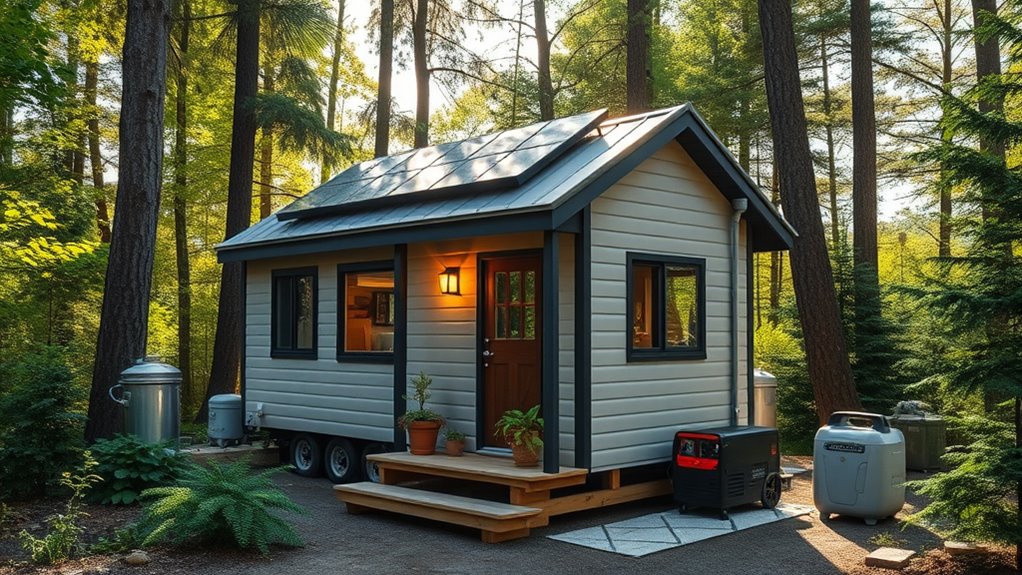
Building an off-grid tiny house requires careful planning and a well-organized checklist to guarantee you’re prepared for sustainable living. One of the most critical aspects is establishing reliable energy and water systems. Solar power is your best bet for harnessing clean, renewable energy. Before you start, assess your energy needs based on your appliances, lighting, and any electronic devices you plan to use. Choose a suitable solar panel system, factoring in panel wattage, battery storage, and inverter capacity. Installing solar panels on your roof or a nearby structure allows you to generate electricity during the day, reducing dependence on external power sources. Make sure to include a quality charge controller and deep-cycle batteries to store excess energy for nighttime and cloudy days. Properly sizing your solar power system is essential to guarantee consistent energy supply, so don’t cut corners—consult with professionals if needed. Additionally, selecting high-quality solar inverters ensures efficient energy conversion and system longevity.
Water filtration is equally essential. Since you’ll be living off-grid, you’ll need a dependable system to provide safe drinking water. Start by identifying your water source—be it a well, rain catchment, or nearby stream. Once you have your source, invest in a multi-stage filtration system to remove sediments, bacteria, and chemicals. A combination of a pre-filter, carbon filters, and UV sterilization can ensure your water is clean and safe. Regular maintenance and replacement of filters are crucial to maintaining water quality, so incorporate this into your checklist. If you plan to collect rainwater, include a rainwater harvesting system with gutter filters and storage tanks, making sure to test water quality periodically. Water filtration isn’t just about convenience; it’s about protecting your health, so don’t skimp on quality.
Conclusion
By following this checklist, you’re well on your way to a safe, sustainable off-grid tiny house. Remember to regularly monitor your systems and stay proactive with maintenance to keep everything running smoothly. Are you ready to embrace the freedom of self-sufficiency and enjoy the simplicity of off-grid living? With proper planning and care, your tiny house can become a reliable, eco-friendly retreat that truly meets your needs. The adventure is yours—are you prepared to take the leap?
Hi, I’m Emma. I’m the Editor in Chief of Tiny House 43, a blog all about tiny houses. While tree houses are often associated with childhood, they can be the perfect adult retreat. They offer a cozy space to relax and unwind, surrounded by nature. And since they’re typically built on stilts or raised platforms, they offer stunning views that traditional homes simply can’t match. If you’re looking for a unique and romantic getaway, a tree house tiny house might just be the perfect option.
